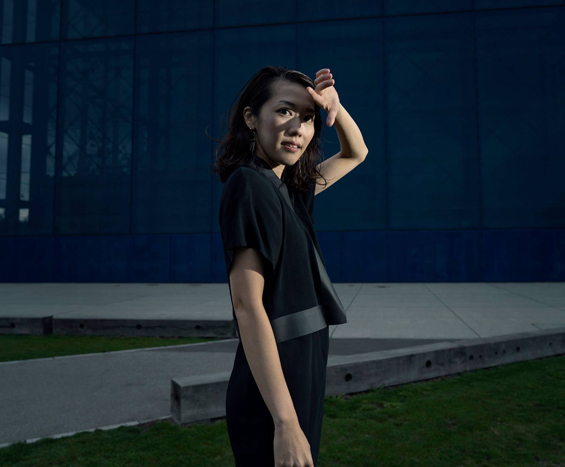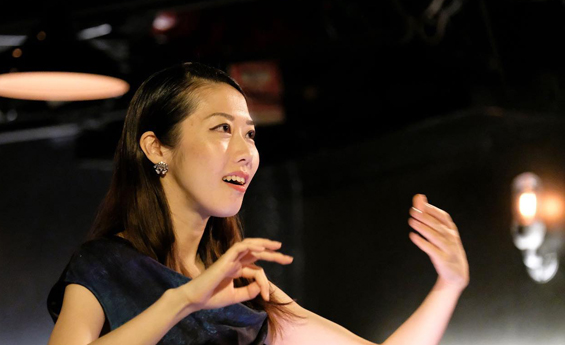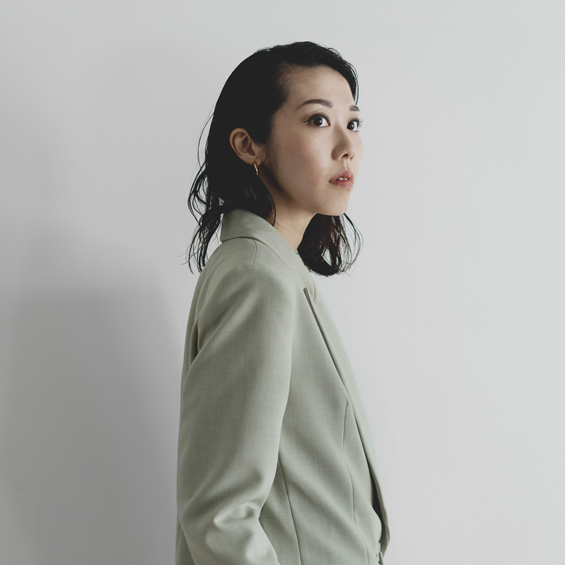

photo: Miho Hazama
FIVE QUESTIONS WITH MIHO HAZAMA
Grammy-nominated composer Miho Hazama has been described in Downbeat as one of “25 for the Future.” While there's truth in that, the release of her terrific new album argues that Hazama's time is right now, not on its way. Imaginary Visions, her first album as the chief conductor of the Danish Radio Big Band, shows a composer in full command of her gifts and an arranger able to bring out the best in whatever ensemble she's leading. It's certainly not the first time that's happened either, as shown by the sterling albums she's produced with her New York-based jazz chamber orchestra m_unit (2019's Dancer in Nowhere; 2015's Time River; 2013's Journey to Journey) and in the compositions and arrangements she's contributed to many other artists' albums. Hazama's expertise extends into other areas too, as illustrated by the pieces she's written for the Tokyo Philharmonic Orchestra, Ashley Bouder Project Ballet Company, and others. textura recently had the pleasure of speaking with her about the exciting new release and how her relationship with one of the world's leading jazz ensembles originated.
01. How exactly in 2019 did your posting as chief conductor of the Danish Radio Big Band (DRBB) come about?
We first met at Tokyo Jazz Festival in the summer of 2017. We had a sixty-minute project together whose focus was the centenary of jazz records. DRBB was selected as the house band for the project, as that year marked the 150th anniversary of the national relationship between Denmark and Japan. (I was asked to be one of the project's producers, but the other producer couldn't participate due to illness, so I ended up producing the whole program, which included guest artists, video production on stage, and the music.) I picked iconic tunes from seven eras of jazz history and revised them for DRBB and guest soloists.
DRBB had no idea who I was until our first rehearsal in Tokyo. They must been SO afraid of this stranger! But they were very well prepared, and we had a nice rehearsal and then concert, which also went really well! So, basically, their expectation of me began as trepidation, but after we had such a great time together, their revised expectation of me became, “Wow, she can do something.” Following that, DRBB started inviting me to direct their concerts in Denmark.
At the end of 2018, I had dinner with the artistic producer of DRBB, and he offered me the chief conductor position. In fact, I misunderstood what he said at first and thought he was telling me that he was going to invite someone else from NYC, so I said, “Cool,” but then a bit after, I had to interrupt him to say, “What? You mean to invite… ME?!?!?” which is why the first track on the new CD is titled “I Said Cool, You Said…What?” In September 2019, when I arrived in Copenhagen for the first time as chief conductor, the band did this flashmob for me, which was one of the loveliest experiences I've ever had.
02. Those who held the post of chief conductor before you—Thad Jones, Bob Brookmeyer, Jim McNeely, Palle Mikkelborg—are formidable figures. What was it like stepping into the role after them? Was the prospect of assuming the position intimidating and did it make you feel nervous and excited? Was there an instant rapport and feeling of chemistry between you and the musicians?
I have to admit that it was quite intimidating! It is a huge honour. I feel like the band has so much great heritage that I should learn more. Studying Thad's, Bob's, and Jim's compositions definitely made me appreciate their ideas about and approaches to harmony constructions, music vibes, forms, rhythmic motives, orchestrations, and composition/harmonization ideas. The new album Imaginary Visions is not copy-and-paste, but it does represent my way of exploring and digesting these master composers' ideas.
The DRBB members are so kind and warm. As you can see from the flashmob video, I feel love from them, and I love them so much, too! They are very open and enthusiastic about new music. I still remember that when I had a very intense week with them playing challenging music, I thought that maybe I'd pushed too hard. But after the concert, I received messages from some of them saying that they absolutely loved the challenge! That made me really happy and excited to work with them.

photo: Nagamitsu Endo
03. Aside from the fact that the DRBB is a larger ensemble than your jazz chamber orchestra m_unit, are there differences between them that stand out in particular? And to what degree if any do their respective home bases, NYC and Denmark, figure into those differences?
First of all, their instrumentations are quite different. The m_unit has strings, and that instrumentation is basically my instinctual brain sound, which is maybe why it's my own band.
Writing for a big band is still challenging to me, as my initial brain sound is always symphonic. It somehow drives me towards writing swingy pieces. I especially enjoy the clear attacks from the horns and the power of the ensemble.
Writing for DRBB is particularly different from writing for my own band. It is a radio big band, where I don't get to pick musicians, and they have an amazing heritage and history. I always think about their heritage when I write for them and also try to think what would be the best for the band's future.
04. In creating the material for Imaginary Visions, your first album with the DRBB featuring your compositions exclusively, did you consciously write the material with the timbres of the ensemble in mind (and with particular players in mind too), and was the writing influenced at all by the compositions of your predecessors in the role?
These compositions are hugely inspired by DRBB members, their tone colour, character of playing, strength, uniqueness, and authenticity. Also, the pieces are secretly inspired by compositions from the former chief conductors, Thad, Bob and Jim. I should also mention that most of the music was written during the pandemic period. During the lockdown, I was stuck in NYC. It was noisy, and there were ambulance sirens, illegal fireworks going off everywhere every night—it was crazy. During that time, I dreamed a lot about going back to Copenhagen and seeing again its beautiful, quiet parks, its trees with their smell of green, the strong winds and subtle sunlight… as I closed my eyes I imagined myself there. Stuck in NYC, I also couldn't express how much I missed playing with DRBB. Now, as I look back at what I wrote, I think these compositions express my hope for the post-pandemic, rather than being dark because of the pandemic.

photo: Agnete Schlichtkrull
05. As you have degrees in both classical composition (from the Kunitachi College of Music) and jazz composition (a Masters from the Manhattan School of Music), do you draw on both when writing a piece?
I think so. As I mentioned before, my instinct brain sound is very symphonic, as I grew up listening and playing a lot of symphonic music with electric organ. I still love going to classical music concerts, too!
Also, the fact that classical composition and jazz composition have a very similar perspective helped me a lot. My brain doesn't work quickly for improvisation, so I don't really play jazz improvisation, even though my primary instrument is piano. But I can take time—a long time—for jazz composing!
My professor for classical composition in Tokyo said during the four years when I was at college that I should write meaningful notes on the score. After coming to NYC, at my first lesson with Jim McNeely, his first comment on my easy-going jazz piece was, “So…what does this note mean?” I was really shocked to hear the same comment from him! And that made me realize that there is no real difference between classical composition and jazz composition. So my composing process hasn't been really changed much since I was in college. I start with sketches—I need an acoustic piano to sketch—and I keep these ideas in my voice mail.
website: MIHO HAZAMA
September 2021![]()